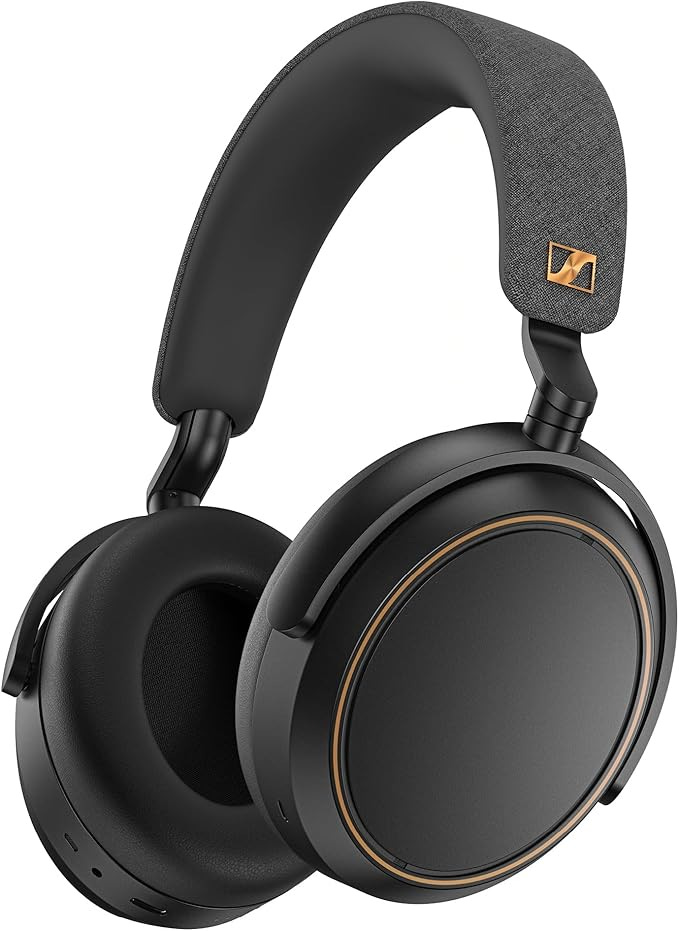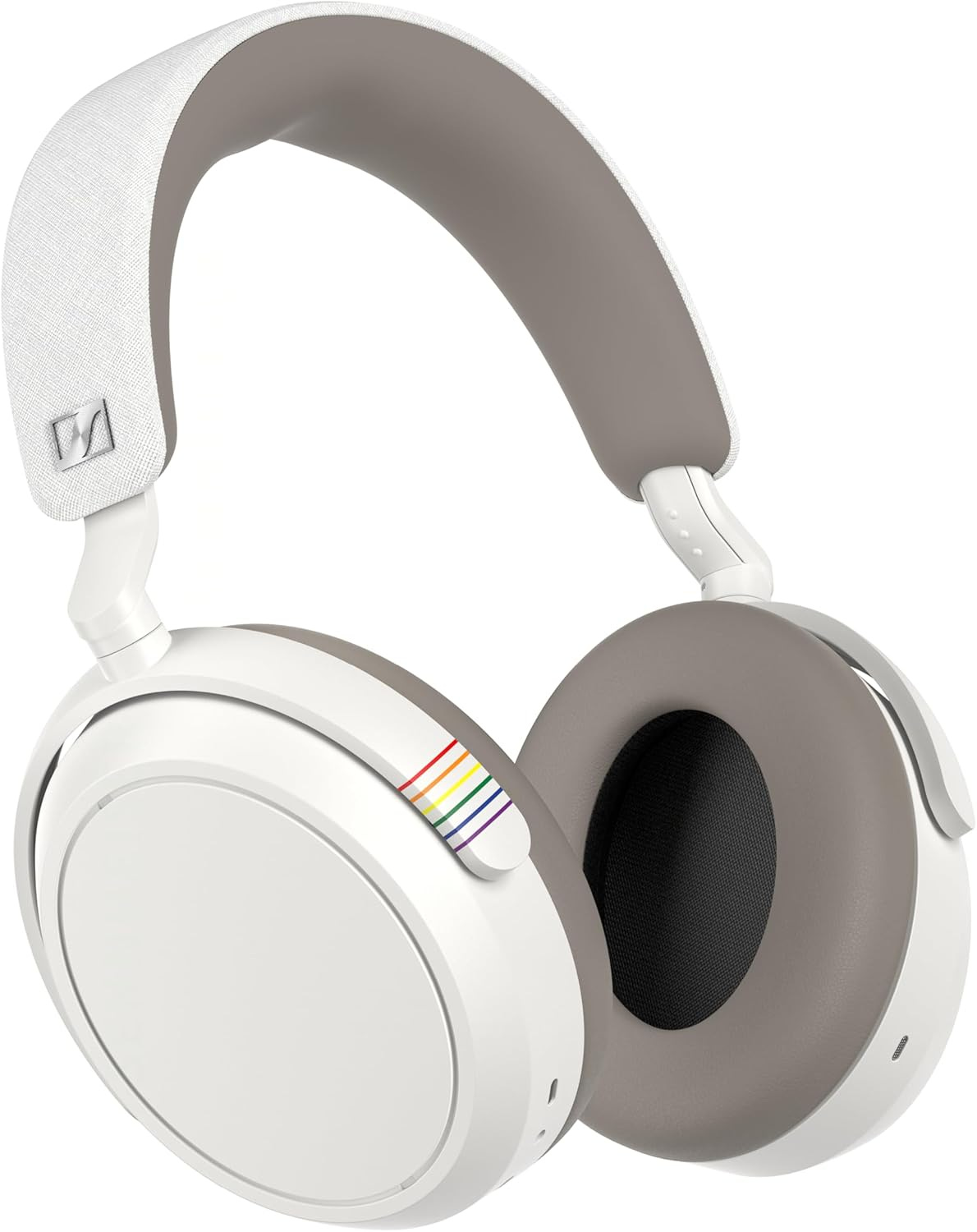Previously, my recommendation was the Sony WH-1000XM5 headphones. The Sonys have the best active noise cancellation (ANC) in the game right now, and very good audio quality. What else could you want?
Despite nailing these two features, the Sony headphones have 1000 random problems and deficiencies in other areas. Each one seems so small, but they add up to a bad experience IMO.
The experience was so bad that I ended up almost never using them, wearing my airpods almost full time. I’ve worn my airpods so much that I seem to have somehow expanded my ear canal or something, since they now fall out of my ears when they didn’t previously.
I was alarmed enough by this that I decided to start wearing over-the-ear headphones again, but the 1000 random problems with the Sony headphones made me feel like looking into alternatives. Before I go into what I found, let me list the problems:
The name. “Sony WH-1000XM5”. I don’t understand why any company would use a random sequence of letters and numbers for a flagship product. Yes, this is an incredibly small thing, but I always feel dumb saying “oh, check out the sony double you aych one thousand ex em five”.
“Speak to Chat”. A horrible “feature" that mutes the audio playback when it detects that you’re speaking. This is just a generally super annoying feature. To make matters worse, it can activate during zoom meetings. That means “speak to chat” will constantly mute the other person whenever you talk. I’ve been embarrassed in multiple work meetings by this.
(Luckily, the feature can be disabled, but it turns itself back on at random intervals.)Uncomfortable. I have a huge head and big ears and the Sony headphones become uncomfortable after a while. This is a personal thing and I’m sure they’re very comfortable if you don’t have a massive noggin like me.
Bad ear detection. All modern high-end wireless headphones try to implement the ability to detect whether the headphones are being worn. This is nice because they can automatically pause your music and turn off ANC when you take them off, which saves battery. When implemented well, you basically never have to turn the headphones on or off - you can just leave them on and depend on the ear detection to save your battery for you.
Unfortunately, this feature of the Sony headphones didn’t work for me at all. It would constantly think I took them off when I didn’t, so it would randomly pause my music all the time. I ended up having to turn this feature off entirely.Horrible app. Wireless headphones all come with apps that are necessary to modify the headphones’ settings. This app is how you can disable speak to chat and ear detection. The Sony headphones app was prerviously called “Headphones connect”, and it was slow and looked ugly, but it worked. They have since updated it to a slow, ugly, non-working version called “Sound Connect”. (It’s possible it’s better now, but the app was constantly glitching and crashing for me whenever I tried to do anything.)
Inability to charge and play audio at the same time. I seriously don’t understand how the technology for this is too complicated for Sony. As soon as you connect the Sony headphones to power, they turn off until you unplug them. This means that if your headphones are dying as you use them, you just need to sit in silence for a couple minutes as you wait for them to recharge (the horror). At least they charge fast.
Uncompetitive battery life. Honestly it’s not a big deal, because they charge super fast and their battery life is still 30 hours. But, many other wireless headphones have much better battery life these days (50 or 60 hours is not uncommon).
No USB-C audio playback. To listen to audio, you obviously must connect your headphones to the device producing the audio signal. To connect your Sony headphones, you can choose between Bluetooth or a 3.5mm audio cable (also known as an “aux cord”).
Bluetooth is obviously what 99% of people are going to be using 99% of the time, but there are occasionally times when you want to use a wired connection. In my case, I like to play piano with a midi controller connected to my computer (so my computer is producing the piano noises). I’d like to wear headphones as I do this to not disturb the people around me, but bluetooth adds a degree of latency to the audio playback that makes it impossible to play piano well. Other things I do sometimes, like video editing, also rely on wired audio to eliminate latency. So for all these use cases, I’m stuck using the 3.5mm audio cable, but it’s slightly annoying, since who has 3.5mm audio cables anymore? I hate carrying around an extra cable that I can only use for one purpose.
It would be much nicer if I could use a USB-C cable for this purpose. I need a USB-C cable anyway to charge the headphones, and my laptop has plenty of USB-C ports to connect to. USB-C cables are perfectly capable of transmitting audio, but for some reason, almost no high-end headphones support audio playback over USB-C, including the Sony ones.
(Audiophiles might notice that 3.5mm audio cables have a theoretical problem associated with them as well. Your computer or phone produces audio in the form of 1s and 0s, which is called a “digital” signal. To play the audio, it has to be converted at some point to smooth variations in voltage to the headphone speakers, which is called an “analog” signal. So at some point, you need to do a conversion from digital to analog audio. 3.5mm audio cables carry analog signals, which means the device the headphones are plugged into is doing that conversion. The first problem with this is that many devices are not very good at doing this conversion, causing a bottleneck for the audio quality. Another is that analog signals are very susceptible to interference, and phones and computers are good sources of interference, so having your whole cable carrying an analog signal right next to your phone is not what you want if you want the highest-fidelity possible sound. To make things worse, high-end headphones will sometimes actually digitize this signal again back to 1s and 0s, to do things like EQ and route different frequencies to different drivers, then convert them back to analog, meaning there was actually no point whatsoever to the first digital-to-analog conversion. USB-C cables support both analog and digital signals, and there is a way for your computer to detect which signal types the headphones support, so it can automatically use digital when headphones support it. Of course, this analog vs digital stuff is an extremely minor detail that 99% of people won’t notice or care about anyway.)
My new reccomendation
Right now, I’m wearing the Sennheiser Momentum 4 headphones:
The Sennheisers resolve all of the issues that I mentioned above, and I’m very happy with them. They have a normal name, they don’t have “speak to chat”, they’re more comfortable, they have great ear detection, their app works, they can charge and play audio simultaneously, they have ~50 hours of battery life, and support audio playback over USB-C. The sound is even better than the Sony ones.
The drawback is that the Sennheisers don’t have quite as good ANC as the Sony headphones, and their microphone is slightly worse. I’m okay with that. The difference in the ANC is small, and I don’t care about the mic since I never use the headphones’ microphone anyway. (The macbook mic is always way better for some reason).
The Sennheisers are also cheaper than the Sony ones. The Sony ones are $400 on Amazon, but often get discounted to $325. On the other hand, the Sennheisers start at $375 and different colors regularly get discounted to around $250. For example, right now, the homosexual color of the Sennheisers is currently $270.
(Not kidding, that’s their official pride color for the headphones. I’m not going to pay $100 extra to avoid a pride flag so those are the ones I have.)
And occasionally the Sennheisers are discounted even more - the black and copper colored ones I pictured above were dropped to $200 for Christmas. Compare that to the Sony ones, which have never been discounted to below $270, and I think it’s fair to say that the Sennheisers have a price advantage.
Not sponsored
This probably just seems like an ad for the Sennheisers, but it’s not haha. For some reason I just got locked in to comparing headphones recently, and this is what I found. Sorry to everyone who trusted me when I recommended the WH-1000XM5s! In my defense, both are amazing pairs of headphones, but I think the Sennheisers are overall ahead by a little.




somebody needed to say this
real talk , the sonys have great hardware terrible software